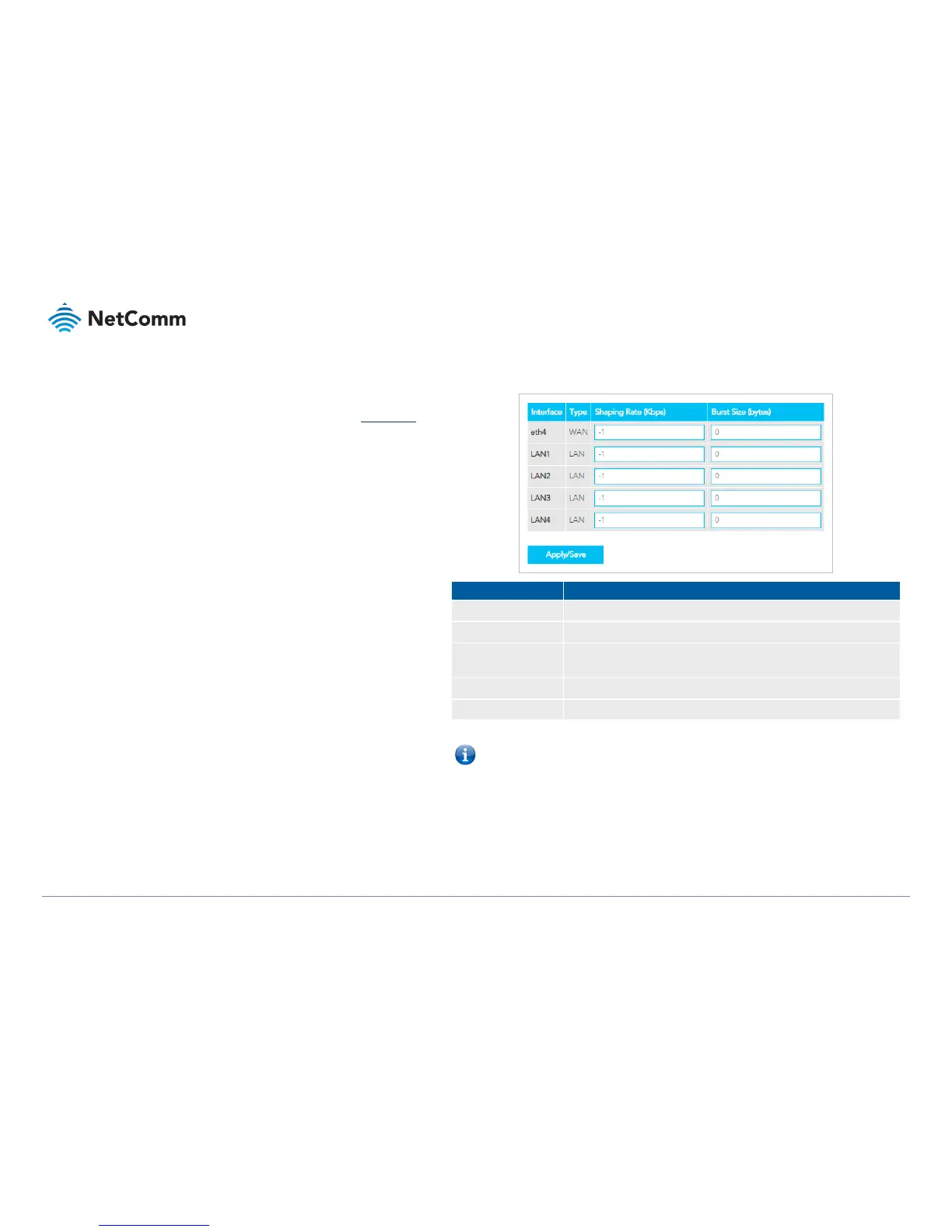QoS port shaping supports traffic shaping of Ethernet interface, limiting continuous
network speed without affecting burst traffic.
To access the port shaping tools, open the Advanced menu and click the Port Shaping link
in the QoS section.
For example, when your browser loads a web page, this is a type burst traffic as the
browser aims to fetch small amounts of data quickly and then leaves the connection idle.
Limiting port speed alone will affect the speed at which web pages are loaded, causing
users to feel that their overall internet connection speed is slow.
By configuring QoS Port Shaping with a Burst size, web pages are allowed to load using
the burst speed, while continuous traffic such as file downloads will be shaped at a lower
rate.
Calculation of shaping rate and burst size
To identify the best way to configure shaping rate and burst size, consider the equation
below:
Time window = Burst size / rate
For example. if a 200 Mbps bandwidth limit is configured with a 5 ms burst window, the
calculation becomes 200 Mbps x 5 ms = 125 Kbytes, which is approximately eighty-three
(83) 1500-byte packets.
If the 200 Mbps bandwidth limit is configured on a Gigabit Ethernet interface, the burst
duration is 125000 bytes / 1 Gbps = 1 ms at the Gigabit Ethernet line rate.
Result
After 1ms of burst data at full gigabit speed, the speed is shaped to 200Mbps.
